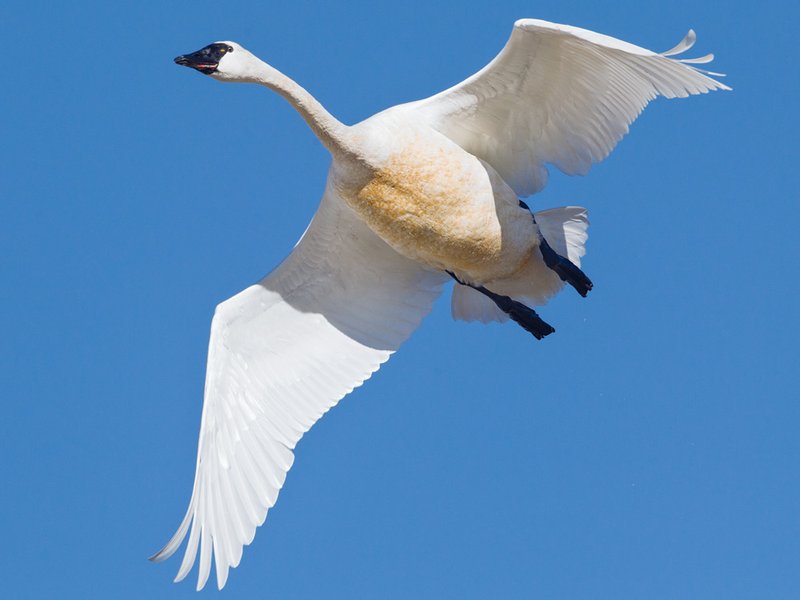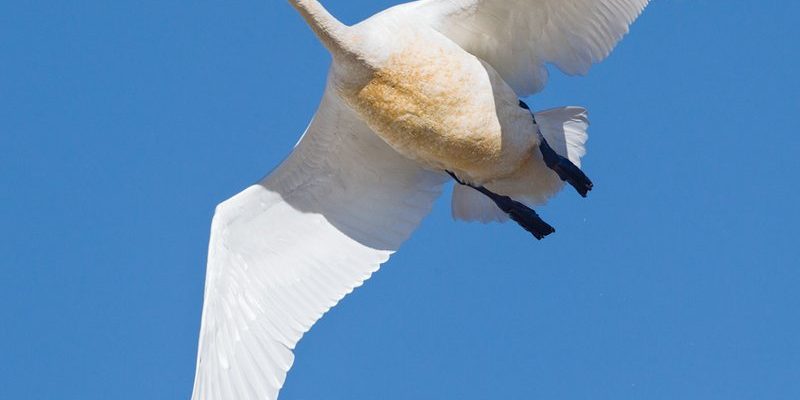
When we think of swans, we often picture serene images of them bobbing on water, but they’re also skilled flyers and hunters. Their abilities stem from not just their physical attributes, but also their social behaviors and adaptability. In this article, we’ll explore how swans manage to be both beautiful and efficient in their flying and hunting techniques, and why that matters to their survival.
Swans in the Sky: The Art of Flying
Swans are known for their powerful wings that enable them to soar gracefully through the sky. But flying isn’t always as simple as flapping their wings. These birds have specific techniques that help them cover vast distances.
First off, swans are heavy birds, but their large wingspans can reach up to 10 feet. This significant span allows for efficient aerodynamics. When they take off, you might notice them needing a long runway—usually a stretch of open water. As they beat their wings, they create lift, propelling themselves into the air. It’s like trying to get a big boat moving; once they’re up, they can glide effortlessly.
Another fascinating aspect is that swans often fly in a V-formation, especially during migration. You might be wondering why they do this. Well, flying in formation helps reduce wind resistance for the birds behind, allowing them to conserve energy. They take turns leading the formation, so everyone gets a chance to rest. Isn’t nature clever?
Migration Patterns of Swans
When it comes to migration, swans are impressive travelers. Depending on the species, they can cover thousands of miles! For example, the Trumpeter Swan migrates between Alaska and the western United States. They typically fly at high altitudes, sometimes reaching up to 8,000 feet, which helps them avoid predators and bad weather.
During migration, swans rely on both instinct and learned behaviors. Young swans, or cygnets, follow their parents, learning the routes and stops along the way. These stops often include bodies of water where they can rest and feed. It’s a real family affair that emphasizes the importance of social structures in swan communities.
Their navigation skills are also quite impressive. Swans can use the position of the sun and stars, along with environmental cues, to guide their journey. They’re not just flying aimlessly; they have a purpose and a destination in mind.
Hunting Techniques: More Than Just Elegant Swimmers
While swans may appear regal as they glide through water, they are also keen hunters and foragers. Their feeding habits are fascinating and can vary significantly based on their environment.
Swans primarily feed on aquatic plants, but they’re not picky eaters. They also enjoy small fish, invertebrates, and even grains when they’re on land. To hunt effectively, swans use their long necks to reach underwater plants. They can submerge their heads and necks while keeping their bodies afloat, resembling a delicate dance beneath the surface.
Sometimes, you’ll see them tip-up feeding, where they float on their backs, exposing their tails while grasping for tasty morsels. This method not only helps them access deeper-water plants but also shows off their excellent adaptation skills. Imagine having that kind of versatility in your own hunting techniques!
Social Hunting: Cooperation Among Swans
Swans are social creatures, often seen in family units or larger groups. This social behavior extends to their hunting strategies as well. When foraging for food, swans often work together, which increases their chances of finding a good meal. They can communicate through various sounds, signaling to one another where food is plentiful or alerting each other about potential threats.
Being social not only helps them find food more efficiently but also strengthens their bonds. Young swans learn valuable skills by observing their parents and other adult swans. It’s a great example of how teamwork and communication can lead to success, both in hunting and in life.
Adaptability: How Swans Thrive in Different Environments
Swans are incredibly adaptable creatures, which is one reason they thrive in various environments, from urban lakes to rural ponds. Their ability to adjust their hunting techniques based on the availability of food is key to their survival.
For instance, in more populated areas, swans might hunt less for natural food and instead rely on human-provided food sources, like bread or grain. However, this can sometimes lead to health issues if they consume too much processed food. So, while they are flexible, it’s essential that we also respect their natural diets by avoiding feeding them unhealthy options.
Additionally, seasonal changes can affect their hunting habits. During winter, when food can be scarce, swans may migrate to warmer areas where food is more plentiful. This adaptability not only helps them survive but shows just how intelligent they are in responding to environmental challenges.
Role of Habitat in Swans’ Hunting and Flying
The habitat of a swan plays a vital role in how they hunt and fly. Swans prefer shallow waters where they can easily access aquatic vegetation. Wetlands, lakes, and rivers provide the perfect mix of feeding grounds and safe havens from predators.
In urban settings, swans have shown an impressive ability to adapt to human presence. They’ll often forage near parks or recreation areas, where people are feeding them. While this can be beneficial for their diet, it’s essential for them to maintain a balance and not become overly reliant on human-provided food sources.
The quality of their habitat directly impacts their overall health and hunting success. Clean, clear waters can provide an abundance of food, allowing swans to thrive and maintain their graceful stature. It’s a beautiful reminder of how interconnected we all are with nature.
Importance of Conservation for Swans
With all their unique flying and hunting techniques, swans are essential players in their ecosystems. However, they face many threats, including habitat loss and pollution.
Conservation efforts play a crucial role in ensuring that swans can continue to thrive in their natural habitats. Protecting wetlands and clean bodies of water is vital not just for swans but for countless other species. Various organizations work tirelessly to restore natural habitats and educate the public about the importance of these beautiful birds.
Swans also symbolize grace and beauty in many cultures, making their protection even more significant. Whether it’s through community cleanup events or educational programs in schools, every little effort can help ensure that future generations can enjoy watching these stunning birds soar through the sky and dive gracefully into the water.
Getting Involved in Swans’ Conservation
If you’re inspired by the swans’ beauty and their incredible adaptations, there are many ways to get involved. Local wildlife organizations often host events focused on conservation efforts. Volunteering for clean-up days or participating in fundraising events can make a big difference.
You could also consider adopting sustainable practices in your daily life, like reducing plastic use or conserving water. These small actions can have a ripple effect, contributing to healthier environments for swans and other wildlife.
By advocating for these stunning birds, we ensure their survival and the continued enjoyment of their unique flying and hunting techniques for years to come.
Swans are more than just graceful figures on a lake; they’re masters of flight and skilled hunters with a remarkable adaptability to their environments. Understanding their unique flying and hunting techniques not only enhances our appreciation for these incredible birds but also encourages us to protect their habitats.
As we ponder their majestic journeys and intricate feeding strategies, let’s remember that every bit of effort we put into conservation matters. After all, swans, with their elegance and intelligence, are a precious part of our natural world. So, the next time you see a swan gliding across the water, take a moment to recognize the amazing journey they embark on, both in the sky and below the surface.

